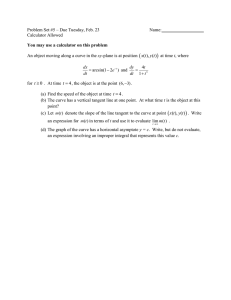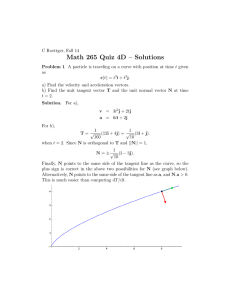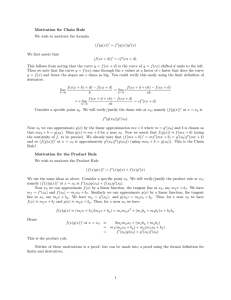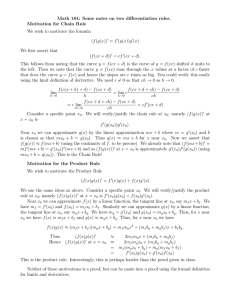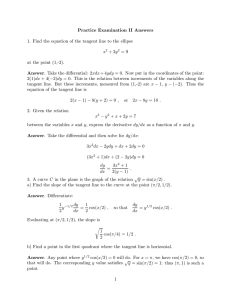ASSIGNMENT 5 for SECTION 001
advertisement
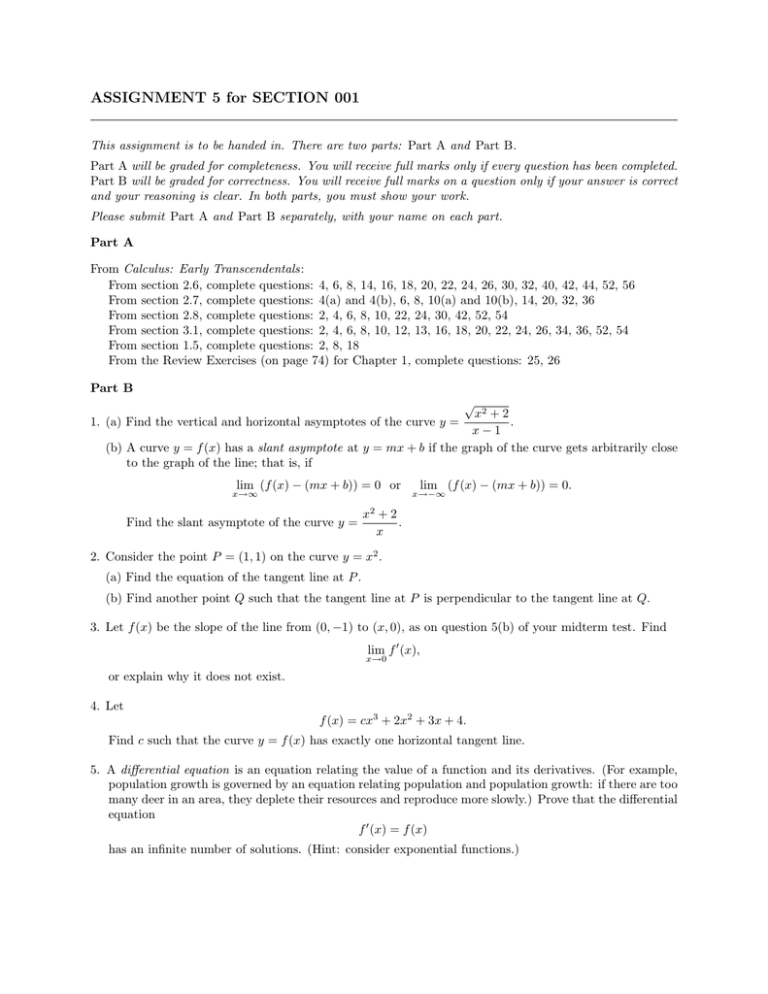
ASSIGNMENT 5 for SECTION 001 This assignment is to be handed in. There are two parts: Part A and Part B. Part A will be graded for completeness. You will receive full marks only if every question has been completed. Part B will be graded for correctness. You will receive full marks on a question only if your answer is correct and your reasoning is clear. In both parts, you must show your work. Please submit Part A and Part B separately, with your name on each part. Part A From Calculus: Early Transcendentals: From section 2.6, complete questions: 4, 6, 8, 14, 16, 18, 20, 22, 24, 26, 30, 32, 40, 42, 44, 52, 56 From section 2.7, complete questions: 4(a) and 4(b), 6, 8, 10(a) and 10(b), 14, 20, 32, 36 From section 2.8, complete questions: 2, 4, 6, 8, 10, 22, 24, 30, 42, 52, 54 From section 3.1, complete questions: 2, 4, 6, 8, 10, 12, 13, 16, 18, 20, 22, 24, 26, 34, 36, 52, 54 From section 1.5, complete questions: 2, 8, 18 From the Review Exercises (on page 74) for Chapter 1, complete questions: 25, 26 Part B √ x2 + 2 . x−1 1. (b) A curve y = f (x) has a slant asymptote at y = mx + b if the graph of the curve gets arbitrarily close to the graph of the line; that is, if 1. (a) Find the vertical and horizontal asymptotes of the curve y = lim (f (x) − (mx + b)) = 0 or x→∞ Find the slant asymptote of the curve y = lim (f (x) − (mx + b)) = 0. x→−∞ x2 + 2 . x 2. Consider the point P = (1, 1) on the curve y = x2 . 2. (a) Find the equation of the tangent line at P . 2. (b) Find another point Q such that the tangent line at P is perpendicular to the tangent line at Q. 3. Let f (x) be the slope of the line from (0, −1) to (x, 0), as on question 5(b) of your midterm test. Find lim f 0 (x), x→0 or explain why it does not exist. 4. Let f (x) = cx3 + 2x2 + 3x + 4. Find c such that the curve y = f (x) has exactly one horizontal tangent line. 5. A differential equation is an equation relating the value of a function and its derivatives. (For example, population growth is governed by an equation relating population and population growth: if there are too many deer in an area, they deplete their resources and reproduce more slowly.) Prove that the differential equation f 0 (x) = f (x) has an infinite number of solutions. (Hint: consider exponential functions.)
